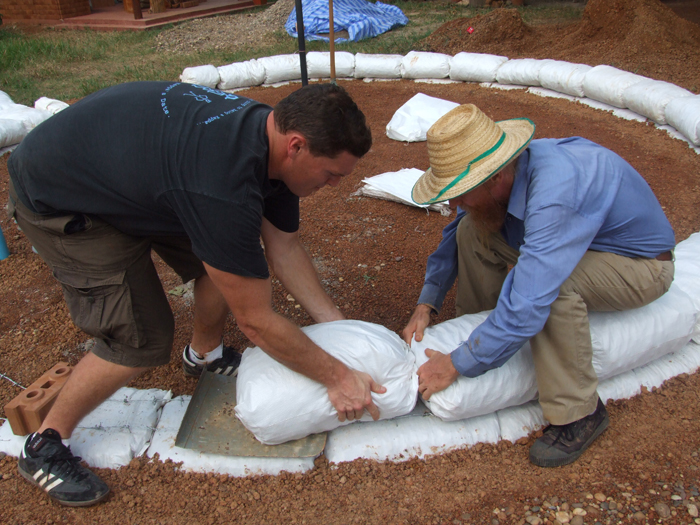Our earthbag projects have confirmed what I’ve known for a long time – that building at $10/sq.ft. (materials only) is possible. Other aspects of earthbag building — strength, durability, sustainability, etc. — are all important. But perhaps the most important point is affordability, because building at $10/sq. ft. makes housing affordable to virtually everyone on the planet.

Are you on an extremely tight budget? (Ha, who isn’t nowadays.) Then I suggest building small using local natural materials, building in stages and adding on as you can afford it. For instance, build one roundhouse and live in it until you’ve saved enough to build another. You could join the roundhouses with arched or gabled covered walkways, enclosed passageways or additions, or just leave them free standing. Extending rectilinear structures would be even easier. Adding on like this requires planning for future doorways and other considerations, but this approach allows you to build debt free.
Here’s a brief list of some other projects built at or near $10/sq. ft (scroll down a little).

I’m sorry, but at least in the US and Canada, building a fully functional dwelling for $10 per square foot is unrealistic, that is unless you want a primitive camping hut (ie with none of the mod-cons most people in the developed world are used to). The $10 per square foot figure is for the shell only.
Do you suggest building an Earthbag dome on top of a cement slab foundation?
Almost anything is possible. The main thing is to use low cost, sustainable, minimally processed materials in your area in a way that makes the most sense. There is no one best building method for everywhere. If you build on a slab, make sure the edges are thickened sufficiently to support the massive weight of the dome and prevent slippage (outward thrust). Also be sure it’s sufficiently above grade to prevent water leaking in during heavy rain and snow. And keep in mind domes evolved in deserts and are prone to water damage in rainy/snowy climates.